Green architecture – Wolgan Valley Resort & Spa, Australia
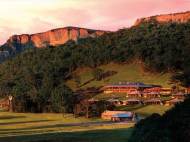 Emirates’ Wolgan Valley Resort & Spa is located on Australia’s Great Dividing Range and borders the Blue Mountains World Heritage Area, a region renowned for its unique landscape and natural diversity. Aside the beauty of nature surrounding Wolgan Valley Resort & Spa, the luxury accommodations designed by are carbon neutral and feature various features of green architecture.
Emirates’ Wolgan Valley Resort & Spa is located on Australia’s Great Dividing Range and borders the Blue Mountains World Heritage Area, a region renowned for its unique landscape and natural diversity. Aside the beauty of nature surrounding Wolgan Valley Resort & Spa, the luxury accommodations designed by are carbon neutral and feature various features of green architecture.
The valley is situated between the picturesque canyons of the Blue Mountains and although the resort’s estate is nearly 4,000 acres, the property itself has been built on less than 2% of the land. With over 175,000 native trees already planted in the wildlife corridors and along creek banks on site, the resort is committed to protect endangered Australian flora and fauna and to restore the valley’s natural balance and beauty.
This includes the reintroduction of the Wollemi Pine (Wollemia nobilis), which was thought to be extinct. The tree, which belongs to the 200 million year old plant family Araucariaceae, was discovered in a nearby canyon in 1994, and is considered one of the most exciting botanical finds of the century. Its discovery has been compared to the equivalent of finding a living dinosaur in the present time.
Designed by Turner & Associates Architects, this luxurious looking and sustainable resort employs a lot of natural materials in its architecture. The guest buildings located around the central homestead building, and the primary materials used in them are mostly natural local stone, Australian hardwoods and corrugated iron. Built to blend into the natural landscape with the least impact to its surrounding environment, the resort’s conservation-led principles reflect in its design, construction and its operating philosophy.
Timber is the predominant material in the expression of the architectural, structural, landscape, interior and furniture design. Hardwood timbers recycled from local rail bridges, sourced on site from fallen timber or reclaimed agricultural items such as fence posts are used alongside timber sourced from renewable Australian sources.
All resort buildings are clad in oiled wall panels of expressed hardwood stud with strip infills, providing a contemporary depth and rhythm to the expression of the facades. Internal linings are predominantly painted v-joint lining boards or detailed timber joinery panels over hardwood timber strip flooring. The homestead building balances a robust recycled hardwood truss roof and perimeter structure against a filigree of horizontal batten balustrades and roof to the covered way.
Local carpenters used wood from fallen trees to craft exquisite furniture within the resort, while original steel and wooden fence posts from the early days of colonial settlement have been creatively restored as lighting and design fixtures. Throughout the construction process, all waste material was disposed of at municipal sites. In order to reduce operational waste on site, suppliers are requested to remove unnecessary packaging.
The resort employs the use of solar power and heat recovery. The resort has contracted its electricity supplier to mandate that 35% of its electrical supply is sourced from renewable energy sources in the region.
In collaboration with local authorities, the resort has been able to take small volumes of water from Carne Creek, considered to be one of the purest rivers in Australia. Rainwater tanks have also been built at every building within the resort to provide water for non-potable uses. All domestic water is recycled, while ‘grey’ water nutrients are removed by way of paddock irrigation and ‘black’ water is treated on-site.
The resort’s laundry services are contracted to an eco-sensitive local supplier in the nearby town of Lithgow. Only bio-degradable cleaning products are used within the resort, ensuring even the cleaning processes are kind to the environment, without compromising on health and hygiene. To further reduce its environmental impact and increase support to local businesses, the resort is committed to sourcing regional and seasonal food and supplies, all from within a 160 km (100 miles) radius.

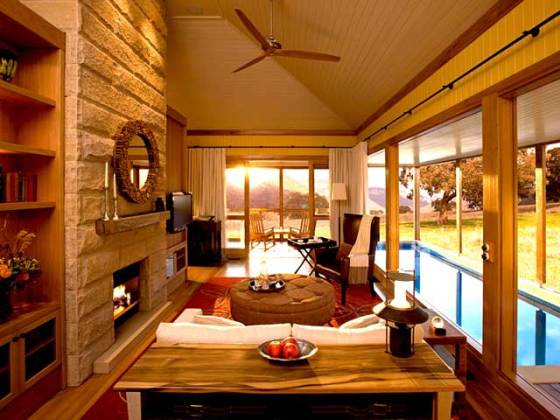
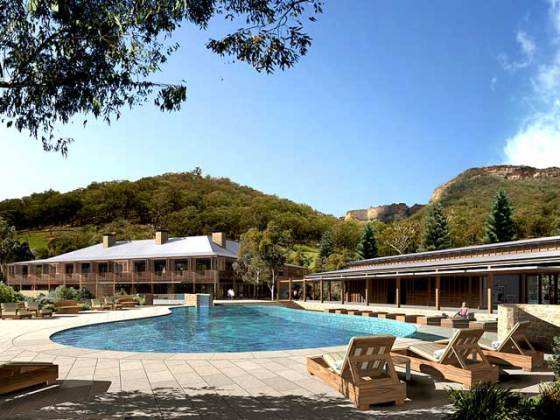
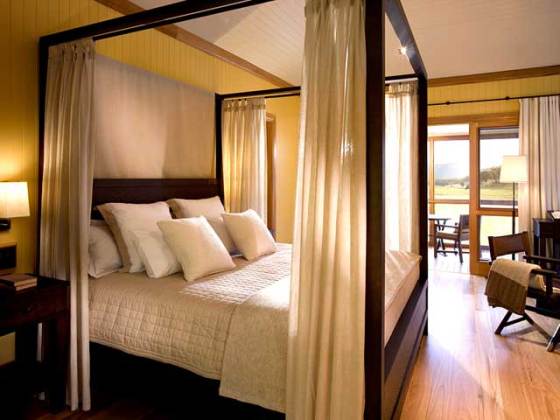
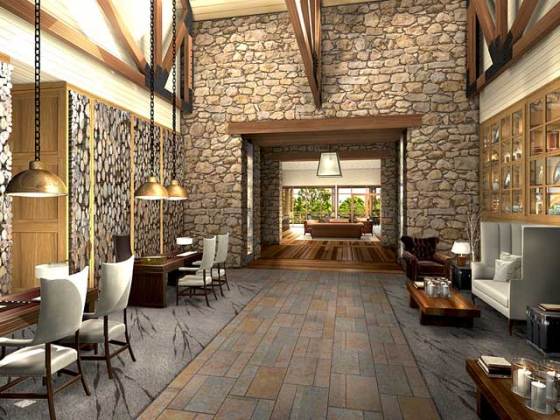








Leave your response!